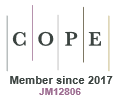Just Accepted
This article has been peer reviewed and accepted for publication. It is in production and has not been edited, so may differ from the final published form.
Diagnoses of sexually transmissible infections in HIV-serodiscordant male couples in Australia, Brazil, and Thailand
Abstract
Background: In an era of biomedical prevention of HIV transmission, prevention of sexually transmissible infections (STIs) remains a priority for male HIV-serodiscordant couples. Three common STIs in populations of gay and bisexual men are chlamydia, gonorrhoea, and syphilis. Methods: We examined the incidence of these three infections in 343 male HIV-serodiscordant couples in Australia, Brazil, and Thailand. The couples participated in a prospective, observational cohort study which included regular STI testing and behavioural surveys for HIV negative partners (HNP). Results: HIV-positive partners (HPP) (IR=22.9/100py, 95%CI:19.3-27.0) had higher incidence rate of any STI (22.9/100py, 95%CI:19.3-27.0) compared to HNP (14.9/100py, 95%CI:12.1-18.3). It was more common for only the HPP (n=107/343, 7.1%) or only the HNP (n=60, 4.0%) to have an STI than for both to have an STI (n=29/343, 1.9%). Higher STI incidence was associated with vocational education (HNP: aHR=2.19, p=0.005), fulltime employment (HPP: aHR=1.61, p=0.016), living in Brazil (HPP: aHR=1.85, p=0.017) or Thailand (HPP: aHR=1.98, p=0.008), having anal sex with other partners (HNP: aHR=2.42, p=0.003; HPP: aHR=2.87, p<0.001), and recent PrEP use (HPP: aHR=1.51, p=0.044). Lower STI incidence was associated with age over 40 (HNP: aHR=0.49, p=0.021; HPP: aHR=0.46, p=0.006), fulltime employment (HNP: aHR=0.56, p=0.016), and longer than five years since first sex with the study partner (HNP: aHR =0.50, p=0.036). Conclusions: There were differences in STI diagnoses within HIV-serodiscordant couples, particularly based on their agreements about sex outside the relationship. Interventions aimed at strengthening these agreements with commitments to STI testing could be effective in reducing the incidence of STIs.
SH24208 Accepted 15 April 2025
© CSIRO 2025



